Kyoto is Japan’s former capital, and nowadays, it is home to more than 1.5 million people. For hundreds of years, it has dazzled tourists with its 1,600 Buddhist temples, Shinto shrines, palaces and Japanese gardens. If you are catching up and thinking about what to do in Kyoto, we have a list of the Best 10 Things to Do in Kyoto that you should include in your Japanese itinerary.
Kyoto is one of the oldest cities in the country, and due to the cultural value of this city, the Allies spared it from bombing and also dropping the atomic bomb during World War II. Many of the local sites are listed as UNESCO World Heritage Sites, including the Kinkaku-Ji Temple, the Ryōan-Ji Gardens and the Tenryū-Ji Temple. Kyoto also attracts visitors to its local cuisine, which is famous throughout Japan. Check out how looks famous Tsukiji Fish Market in Tokyo A trip to Kyoto is an experience you will remember for a long time. Read our 6 tips for planning a trip to Japan before you decide what places you want to visit in Kyoto.
Kinkaku-ji Golden Temple
Each list of things to do in Kyoto should start with a temple. More than 600 years ago, the family of former military leader, Ashikaga Yoshimitsu built a house that was later rebuilt into a Buddhist temple. The temple includes a golden pavilion Kinkaku-Ji, which is covered with sheets of pure gold from the first floor and inside are the remains of a preserved Buddha. Unfortunately, the original building was burnt down in 1950 by a mentally ill monk and the building standing in its place is only a very convincing replica.
Gion District is Full of Japanese Geisha
If you are wondering what to do in Kyoto, be sure to visit Gion. It is one of the oldest and most famous parts of ancient Kyoto. The district is in the western part of the city between the Yasaka Shrine and the Kamo River. The Gion district is especially interesting because it is one of the last places in Japan to teach the art of true geisha. This craft is hundreds of years old, and in ancient times, the geisha was a luxury companion who had to be beautiful, educated and entertain society. After World War II, Japan was in such a crisis that many geishas resorted to occasional prostitution, and, therefore, the term geisha is sometimes confused with the term luxury prostitute. A true geisha never engaged in prostitution.
Nowadays, a small percentage of women are engaged in this craft, yet it is still very lucrative, and geisha continues to enjoy the company of choice in the luxurious tearooms that you can find in the Gion district. If you are more interested, we recommend that you take a guided tour after dark. In addition to geisha, you will find a lot of zen gardens, historic buildings, cafes and mainly tea rooms, including the most luxurious, which in Japan, is called Ochaya.

Tea Ceremony in Kyoto
In Japan, tea ceremonies are popular; the host prepares a ritual matcha tea for guests. The ceremony is a very formal preparation of tea, which should lead to the best taste of the prepared drink. The ceremony dates back to the 12th century, where monks meditated during their preparation and aim to connect all five senses and achieve harmony. Nowadays, tea rituals are performed more for fun and inherently belong to Japan’s cultural heritage. Enthusiastic tourists undergo tea rituals under the guidance of experienced hosts to get a closer understanding of Japanese traditional culture. If you are curious and like matcha tea, we strongly recommend attending the tea ritual. And you will have the best chance in Kyoto.
Ryōan-Ji Temple with a Unique Zen Garden
The Temple of Peaceful Dragon is a popular tourist destination and is certainly one of the best things to do in Kyoto. It attracts visitors mainly with its unique garden, which probably dates back to the 15th century. The Zen Garden consists of buried white gravel in which large stones surrounded by moss are set. The gravel is carefully dug into the straight lines and concentric circles that surround each stone. The peculiarity of the garden is that you will never see all the stones at the same time. Whatever angle you look at, one stone will always cover another. The purpose of the garden is unclear; no one knows what the Zen garden is trying to symbolize, nor why it was built in the temple. However, it cannot be denied that long gazes into ordered stones bring calm and peace of mind.
Tenryū-Ji Temple with the Most Beautiful Garden in Kyoto
This temple, belonging to the Rinzai Zen Buddhist School, has been in the Uyo district since 1339. Tenryū-Ji is famous for its gardens, which are among the most beautiful in Japan. Other buildings in the complex are also famous, such as the Chokushi Gate, which is built in the ancient architectural style of Yotsuashimon. It is one of the oldest buildings in the area. There are crypts of two famous Japanese emperors, Go-Saga and Kameyama, in the complex.
Bamboo Forest Arashiyama
The first bamboos came to Japan in the 7th century from China and have since become part of Japanese nature. There are a lot of bamboo forests, but one located in Kyoto’s Arashiyama district is very popular with tourists. It can be reached on foot directly from the gardens of the Tenrujiji Temple. Bamboo is a unique natural material that is used in Japan to produce a variety of items, sometimes even as food. It is the fastest-growing grass in the world and can reach a height of up to 40 meters.
From one side of the forest is a view of the magnificent lake and monkey mountain Iwatayama where snow monkeys live – Arashiyama Monkey Park Iwatayama. We highly recommend visiting this place, but plan everything well because unfortunately, we did not make it in time – they closed at 4:30 pm. A popular attraction is also the villa Okochi-Sanso, standing on the edge of the bamboo forest, where Denjiro Okochi, the star of the Japanese silent film, lived.

Fushimi Inari-Taisha Shrine with Thousands of Torii Gates
The most important Shinto shrine in Japan has been in Kyoto since the 8th century, although its main building was not completed until 1499. The main feature of Shinto shrines are the red wooden gates called Torii, which always stand in front of the temple itself. The Fushimi Inari-Taisha Shrine is unique in that it is lined with thousands and thousands of red Torii gates that create a nearly four-kilometre stretch leading directly into the shrine. Every year, Japanese companies invest in the purchase of a new Torii to lean towards the gods. On each Torii, you will find in Japanese the year the Torii was made and the name of the company or even the individual who paid for it. Anyway, you shouldn’t miss the famous hike through the red Torii as it is one of the best things to do in Kyoto.
The shrine is also a short walk from train stations Inari (JR) and Fushimi-Inari (Keihan). The famous Buddhist temple Tofukuji is very close to this station. The entrance is marked by a large vermilion Torii, which is guarded by sculptures of foxes. You don’t have to pay anything for the entry as many other free atractions in Kyoto.
Kiyomizu-Dera Temple with a Magical Waterfall
Kiyomizu-Dera refers to several temples located in the eastern part of Kyoto. It is one of the most popular and most visited monuments in all of Kyoto. Inside the complex is the Otowa-no-Taki waterfall, which is divided into three springs. Each spring symbolizes something different; the first denotes health, the other longevity, and the last, achievement in study. Every visitor tries to drink from at least one spring to achieve happiness in their desired area of life. The main temple offers spectacular views of the surrounding landscape from a 13-meter-high wooden terrace. During the Edo period, it was believed that you would fulfil any wish if you survive the jump from such a terrace. Altogether, over 200 people jumped here, but unfortunately, not everyone survived. Nowadays, headless jumps to the abyss have been abandoned, and people only come here to drink from the magic springs.
Chion-in, the Temple with the Largest Bell in Japan
The Chion-in Temple Complex offers a walk through the vast grounds of the temple, the entrance to temple buildings and insight into traditional Japanese gardens. It also hides several attractions. The entrance to Chion-in is guarded by the huge 16th-century Sanmon Gate, measuring over 24 meters. In Japan, you will not find a larger building of the same historical value. At the same time, you will find the largest bell in Japan, which weighs over 72 tons and needs more than 20 men to ring. As with other Japanese bells, this bell has no heart and resounds with a huge hammer.
The Kōdai-Ji Temple with the Mausoleum of the High Official
The 1606 Buddhist temple was built by the grieving widow Nene, who became a nun after the death of her husband Hideyoshi, a high Japanese official. Its attractions are the famous beautiful gardens, which are among the nationally protected monuments. Behind the temple lies the mausoleum itself, guarding the bodies of Hideyoshi and Nene. While wandering around the ancient complex, do not miss the main gate; then take a tour of the tea houses and finally, walk through the magical bamboo grove.
If you have been to Kyoto or are going there, let us your Best Things to Do in Kyoto!
Liked this post? PIN IT FOR LATER!!
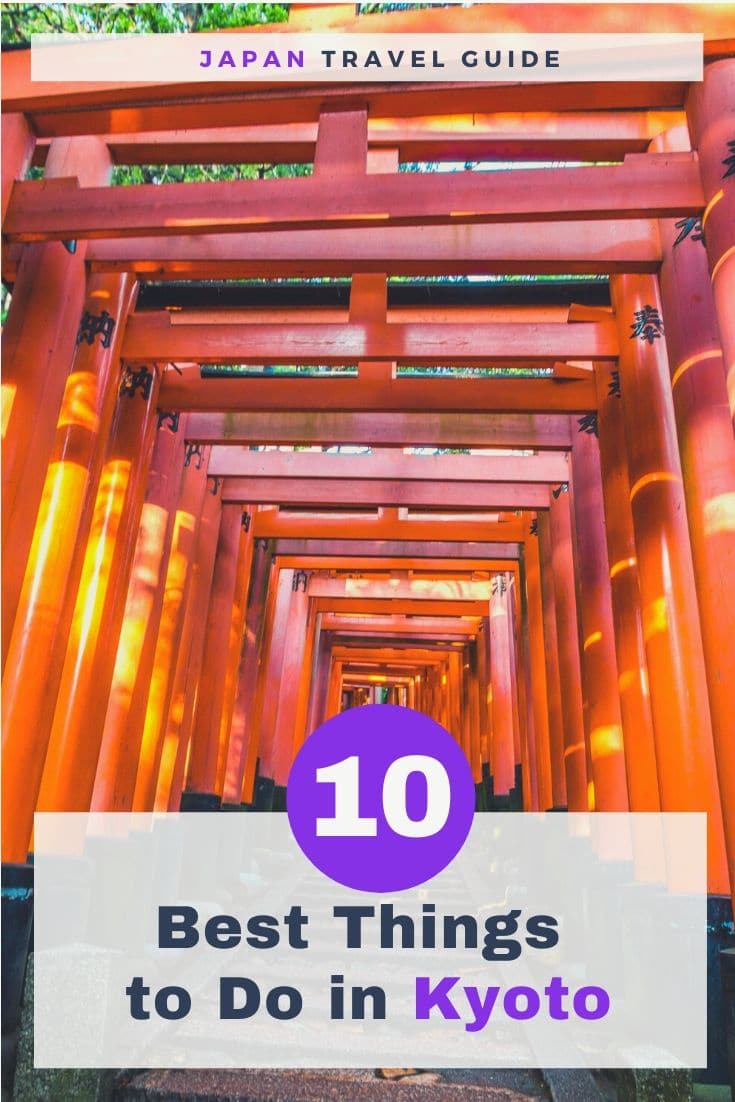

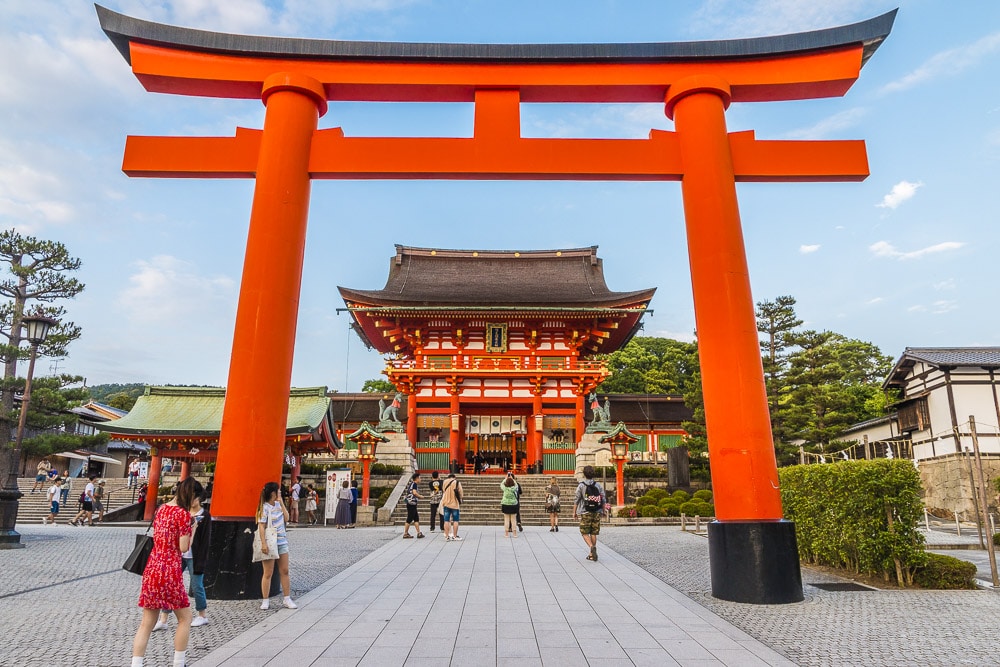
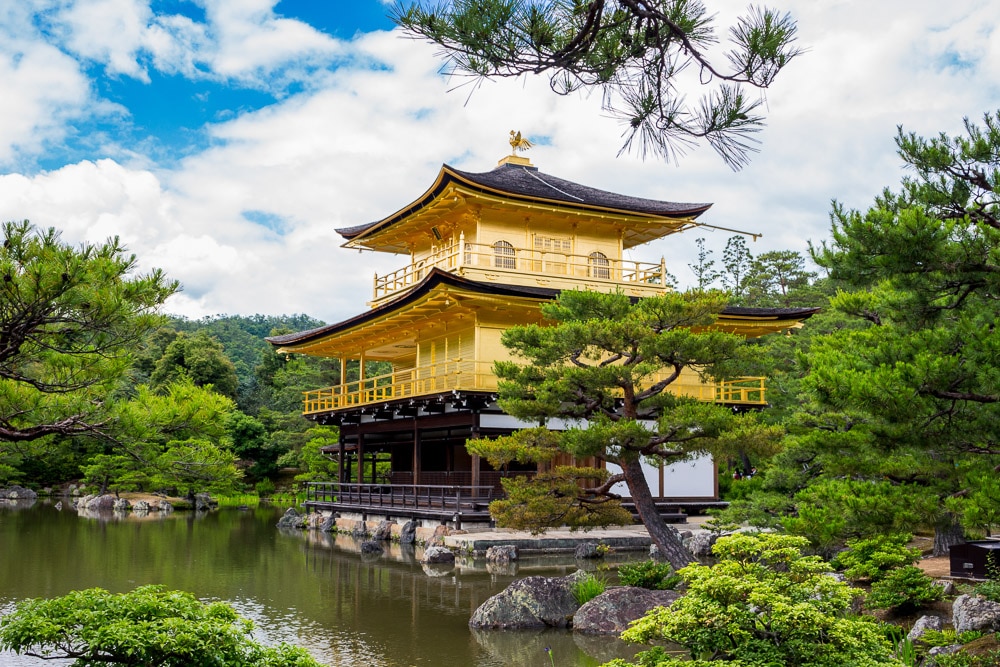
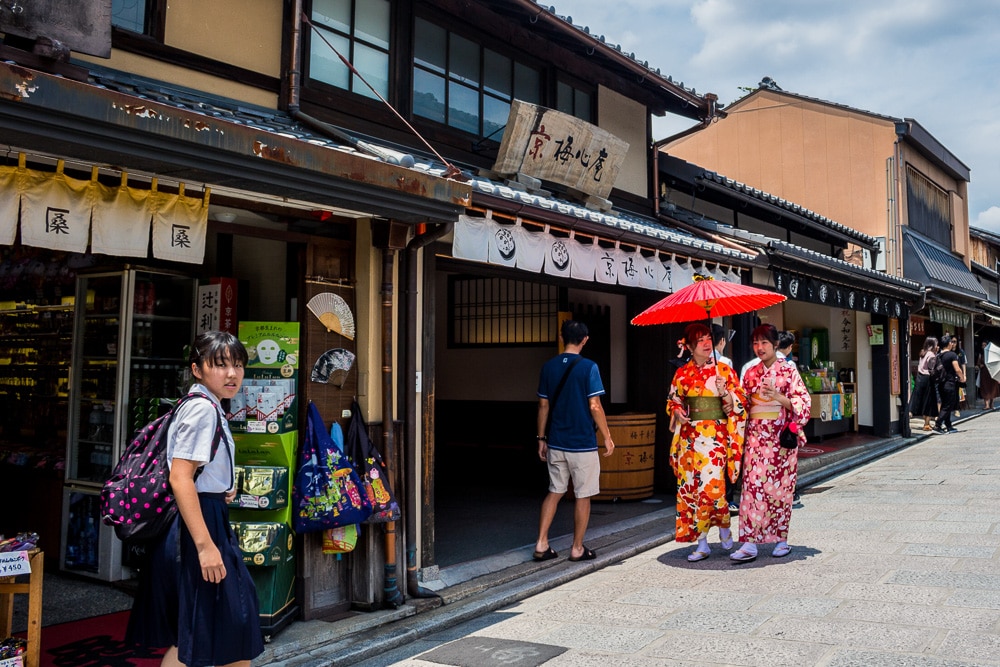


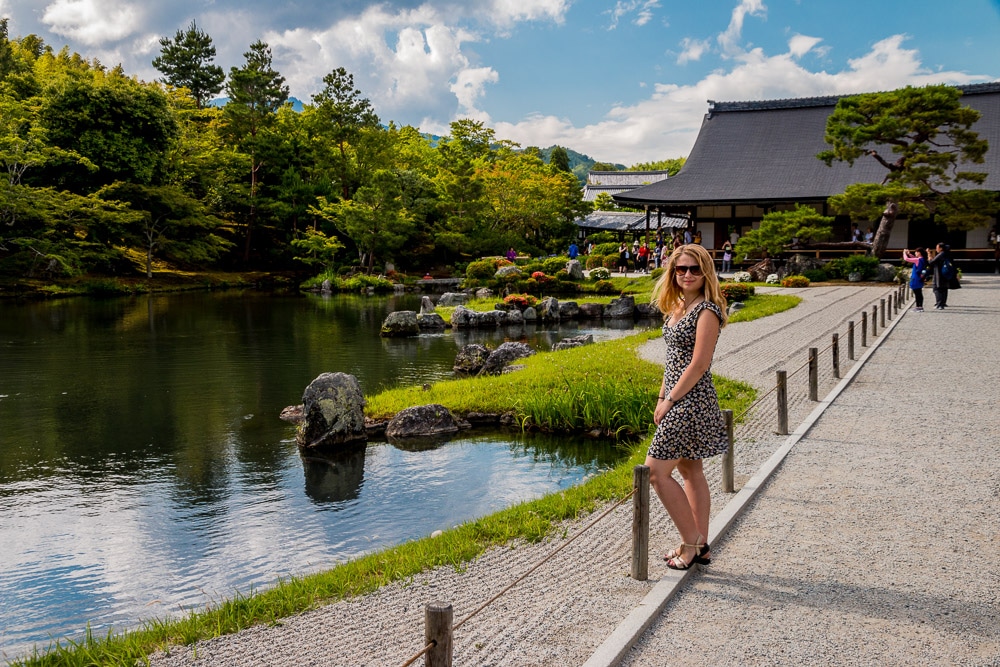
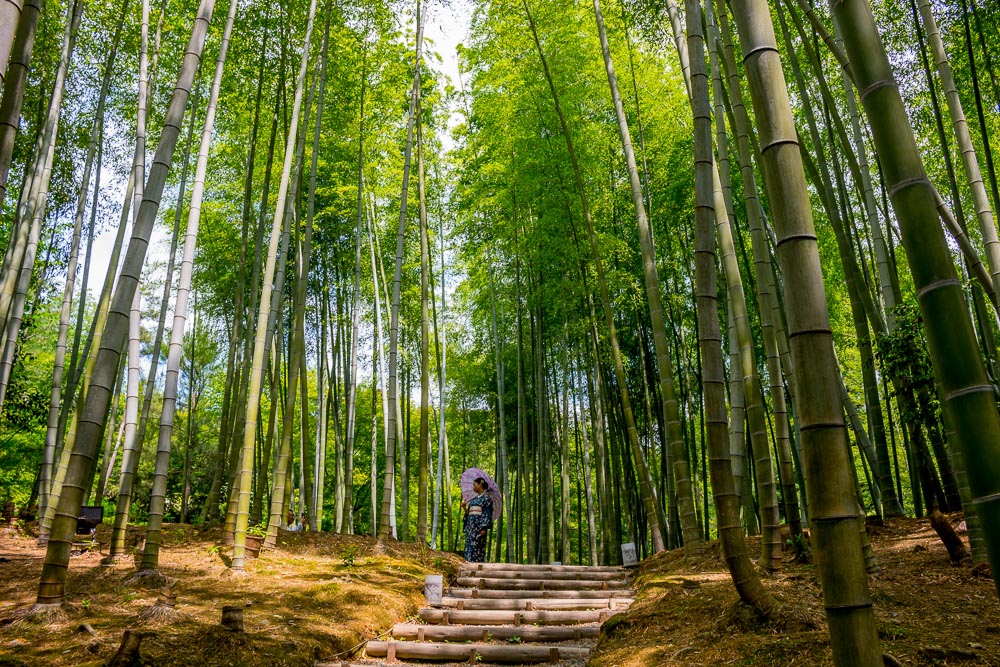
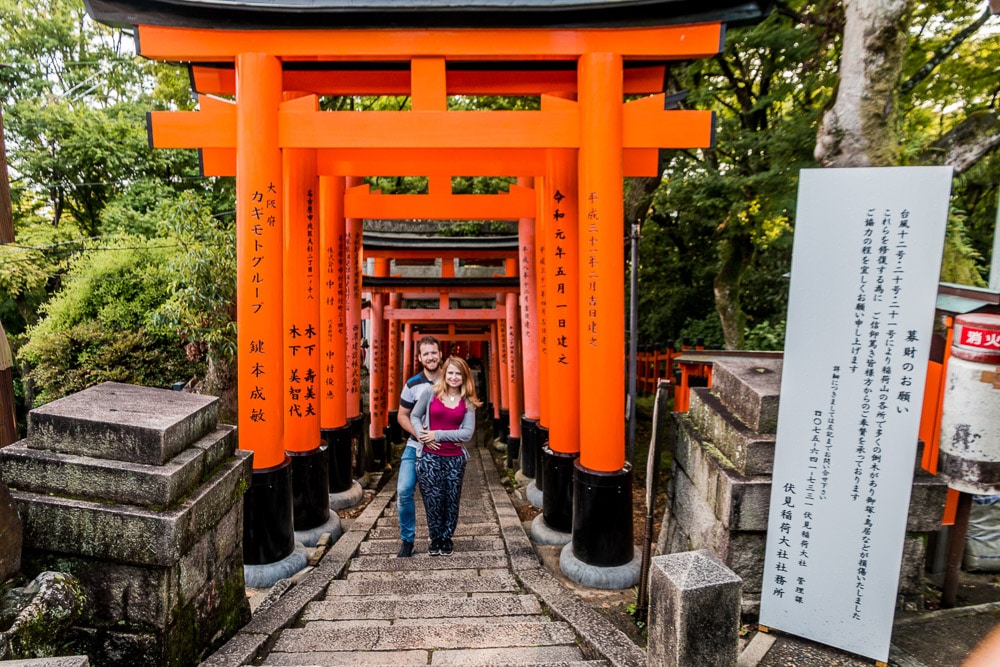



Really great, thorough guide! We hope to visit Japan one day, hopefully for not less than 2 weeks. We’ve been immersing ourselves in as much Japanese cuisine as we can here in Germany! But we look forward to the real thing eventually!
Hi California, tahnk you for nice comment! I believe you will really enjoy and if you love Japanese cuisine, whow..If I could, I wouldn’t eat anything else for the rest of my life!